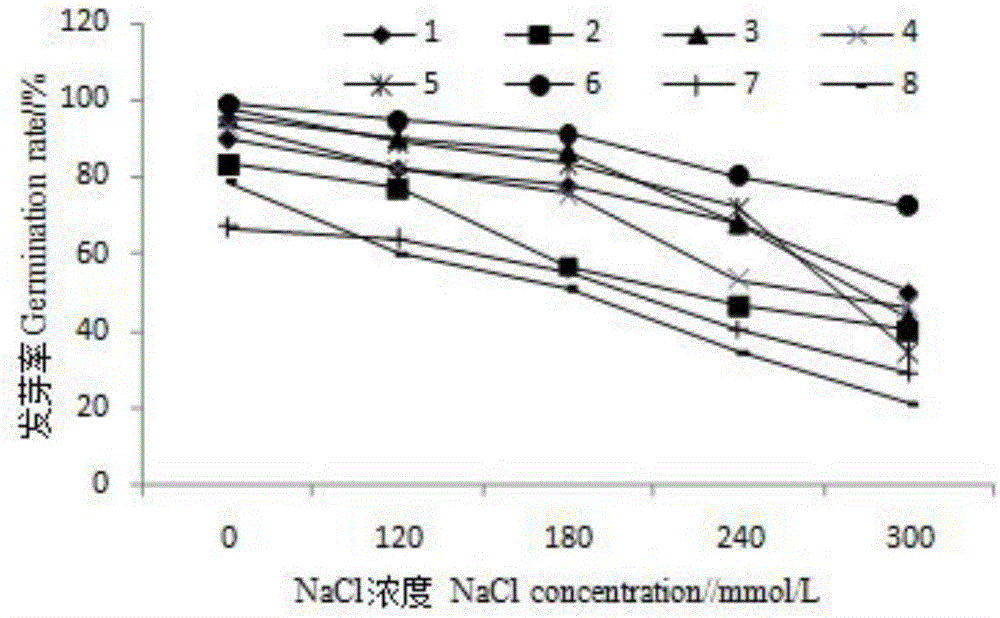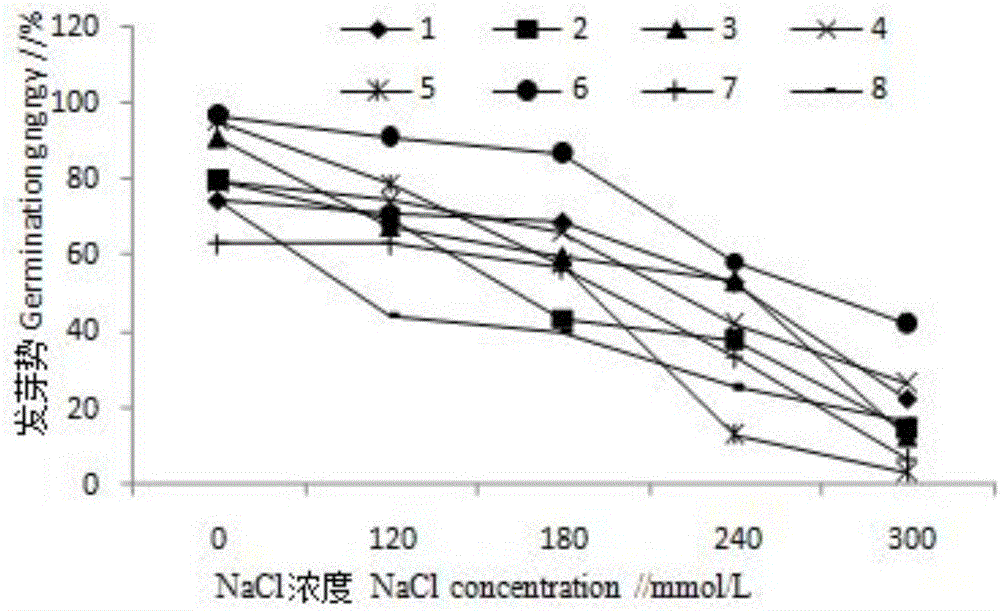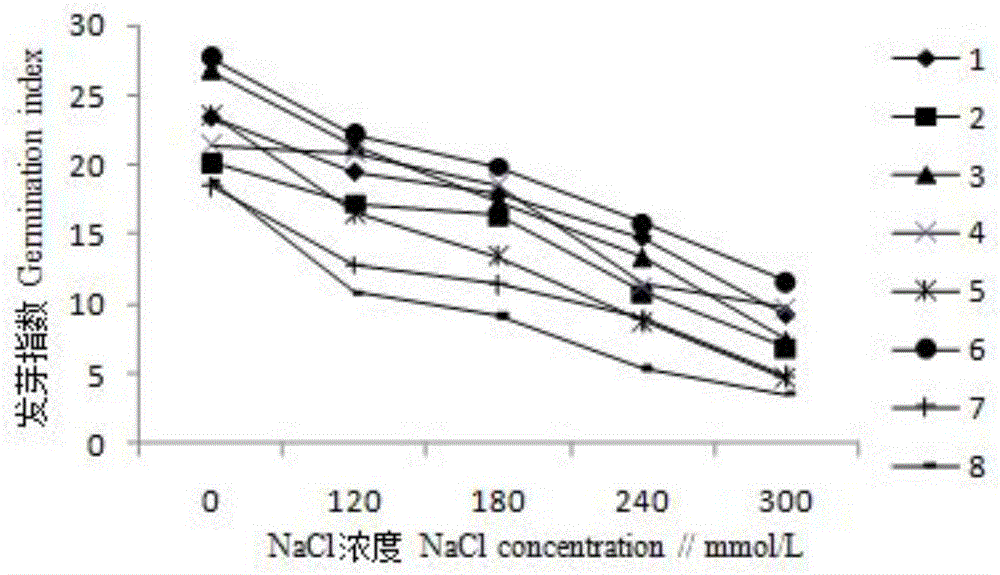Method for improving salt and alkaline-resistant property of corn germplasm resource seeds
A technology of salt tolerance and corn, applied in the directions of seed immunity, seed and rhizome treatment, application, etc., can solve the problems of less salt tolerance of corn, less reports on salt tolerance of corn germplasm, etc., and improve the salt tolerance performance. , Improve germination rate, good resistance effect
- Summary
- Abstract
- Description
- Claims
- Application Information
AI Technical Summary
Problems solved by technology
Method used
Image
Examples
Embodiment 1
[0025] The method for improving the salt-tolerant performance of corn germplasm seeds in this embodiment includes the following steps:
[0026] (1) According to "Description Standards and Data Standards for Corn Germplasm Resources", select mature corn seeds with full grains and no defects, dry them at 30-35°C for 10, and naturally cool to room temperature; then place the cooled corn seeds Soak it in a sodium hypochlorite solution with a mass concentration of 0.5 wt% for 10-15 minutes, then rinse with distilled water 3 times, and then absorb the attached water with filter paper for use;
[0027] (2) Take 1kg of the above-mentioned sterilized corn seeds and immerse them in 5L of 3wt% maltitol solution for 30min;
[0028] (3) The corn seeds after the above treatment are conventionally ventilated or dried below 30°C, and cooled to room temperature, and then conventionally stored.
Embodiment 2
[0030] The method for improving the salt-tolerant performance of corn germplasm seeds in this embodiment includes the following steps:
[0031] (1) According to "Description Standards and Data Standards for Corn Germplasm Resources", select mature corn seeds with full grains and no defects, dry them at 30-35°C for 10, and naturally cool to room temperature; then place the cooled corn seeds Soak it in a sodium hypochlorite solution with a mass concentration of 0.5 wt% for 10-15 minutes, then rinse with distilled water 3 times, and then absorb the attached water with filter paper for use;
[0032] (2) Take 1kg of the above-mentioned sterilized corn seeds, and immerse them in 10L of a 1.2wt% maltitol solution for 30min;
[0033] (3) The corn seeds after the above treatment are conventionally ventilated or dried below 30°C, and cooled to room temperature, and then conventionally stored.
Embodiment 3
[0035] The method for improving the salt-tolerant performance of corn germplasm seeds in this embodiment includes the following steps:
[0036] (1) According to "Description Standards and Data Standards for Corn Germplasm Resources", select mature corn seeds with full grains and no defects, dry them at 30-35°C for 10, and naturally cool to room temperature; then place the cooled corn seeds Soak it in a sodium hypochlorite solution with a mass concentration of 0.5 wt% for 10-15 minutes, then rinse with distilled water 3 times, and then absorb the attached water with filter paper for use;
[0037] (2) Take 1 kg of the above-mentioned sterilized corn seeds and immerse them in 8 L of a 2wt% maltitol solution for 30 minutes;
[0038] (3) The corn seeds after the above treatment are conventionally ventilated or dried below 30°C, and cooled to room temperature, and then conventionally stored.
PUM
 Login to View More
Login to View More Abstract
Description
Claims
Application Information
 Login to View More
Login to View More - R&D Engineer
- R&D Manager
- IP Professional
- Industry Leading Data Capabilities
- Powerful AI technology
- Patent DNA Extraction
Browse by: Latest US Patents, China's latest patents, Technical Efficacy Thesaurus, Application Domain, Technology Topic, Popular Technical Reports.
© 2024 PatSnap. All rights reserved.Legal|Privacy policy|Modern Slavery Act Transparency Statement|Sitemap|About US| Contact US: help@patsnap.com










